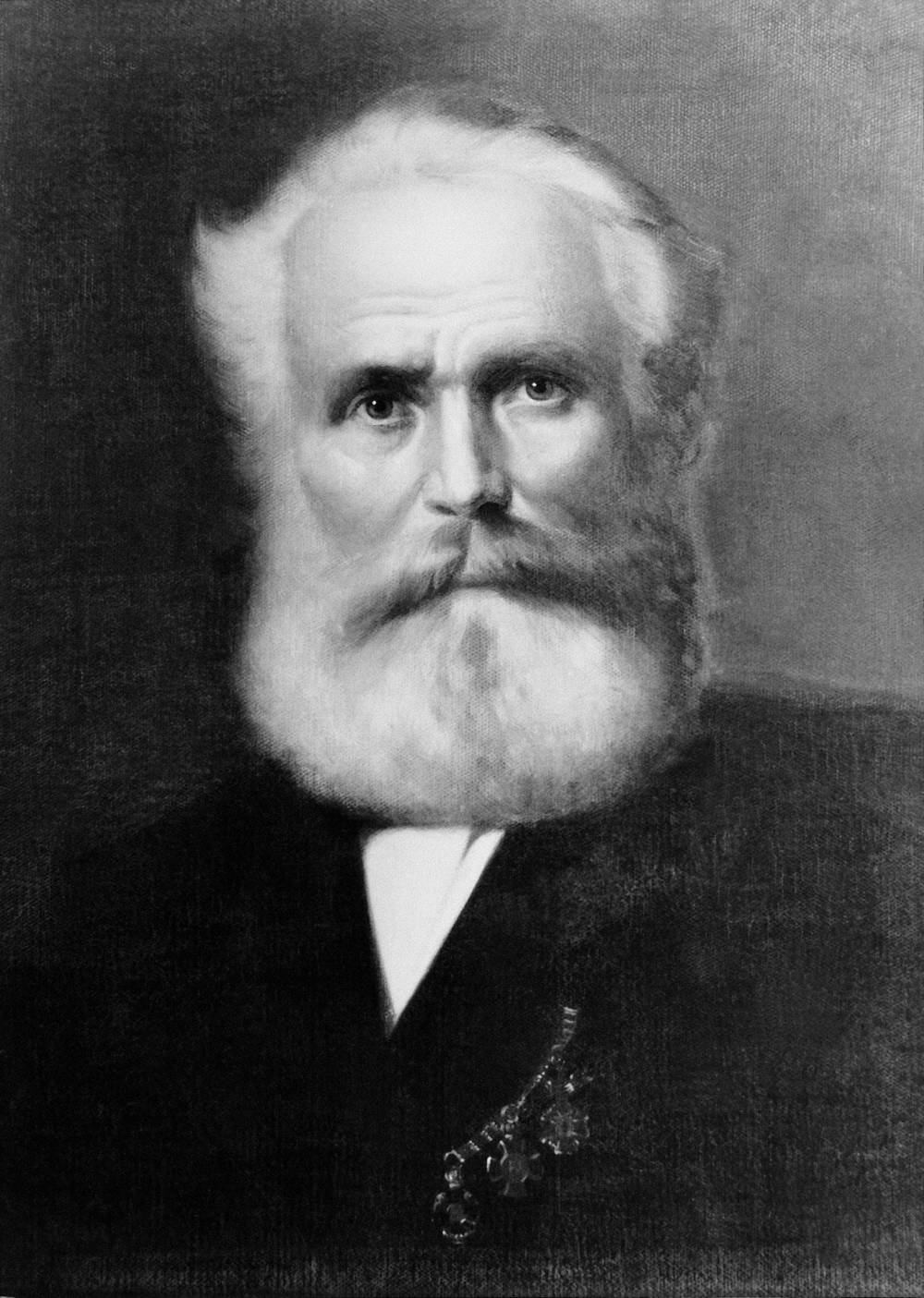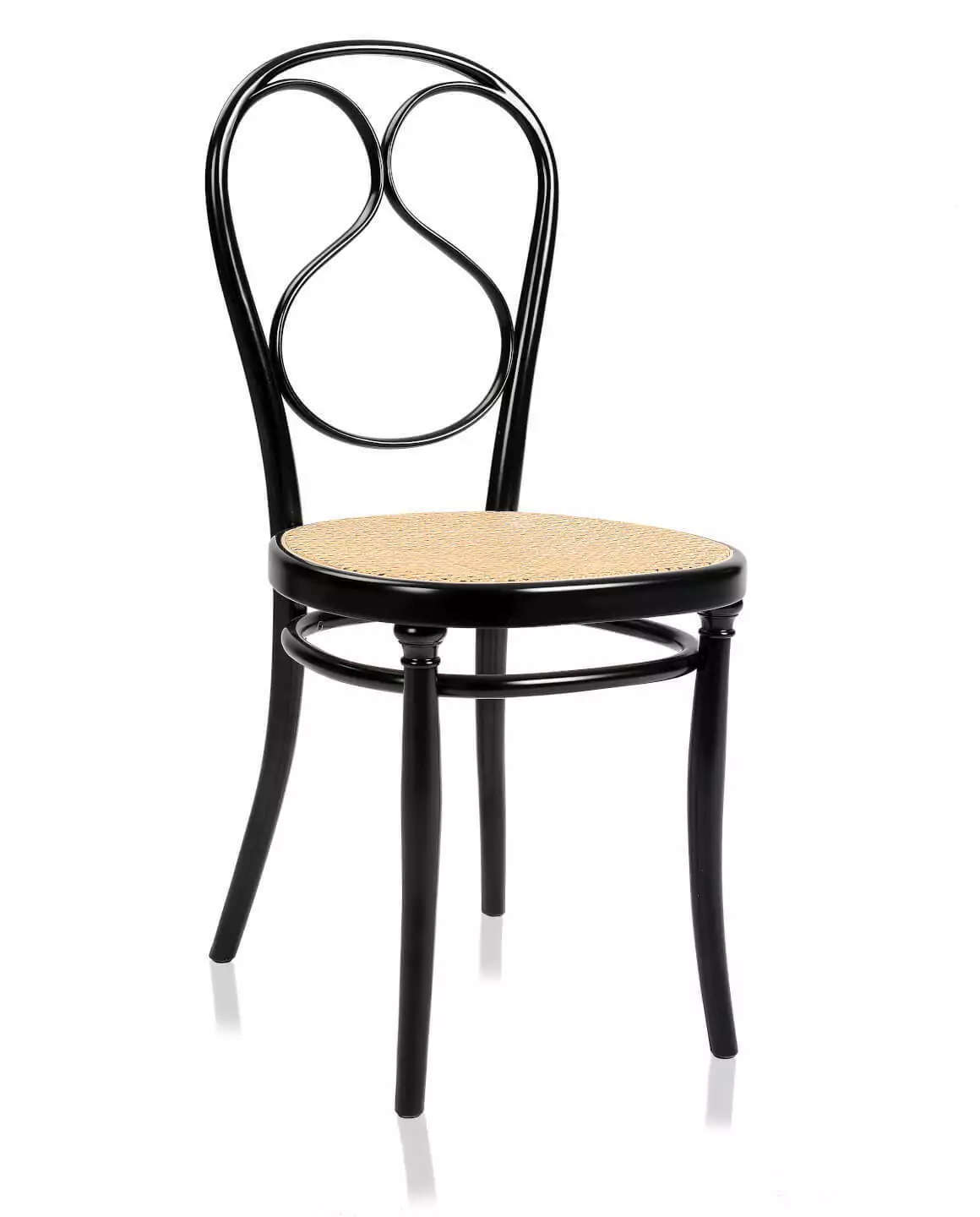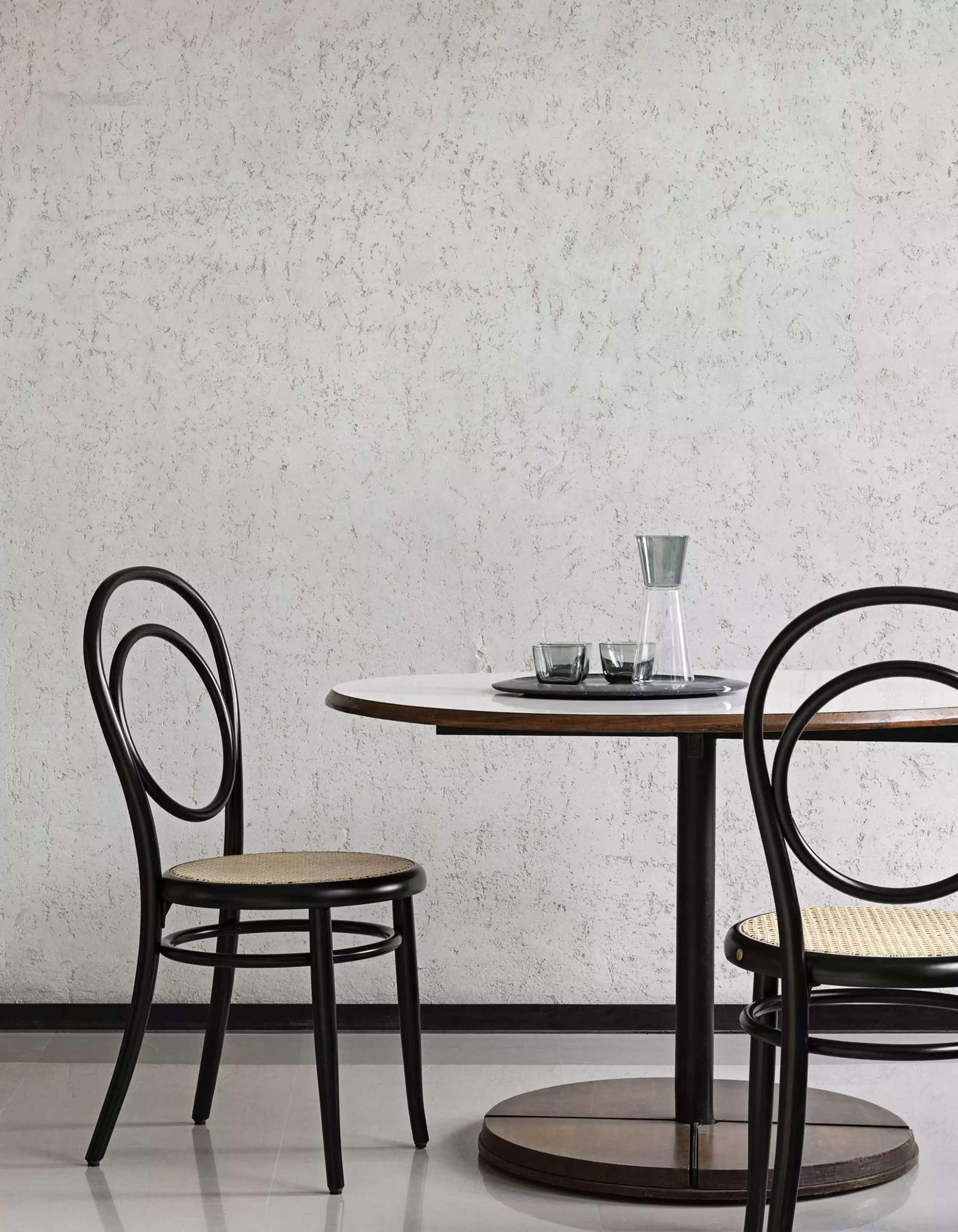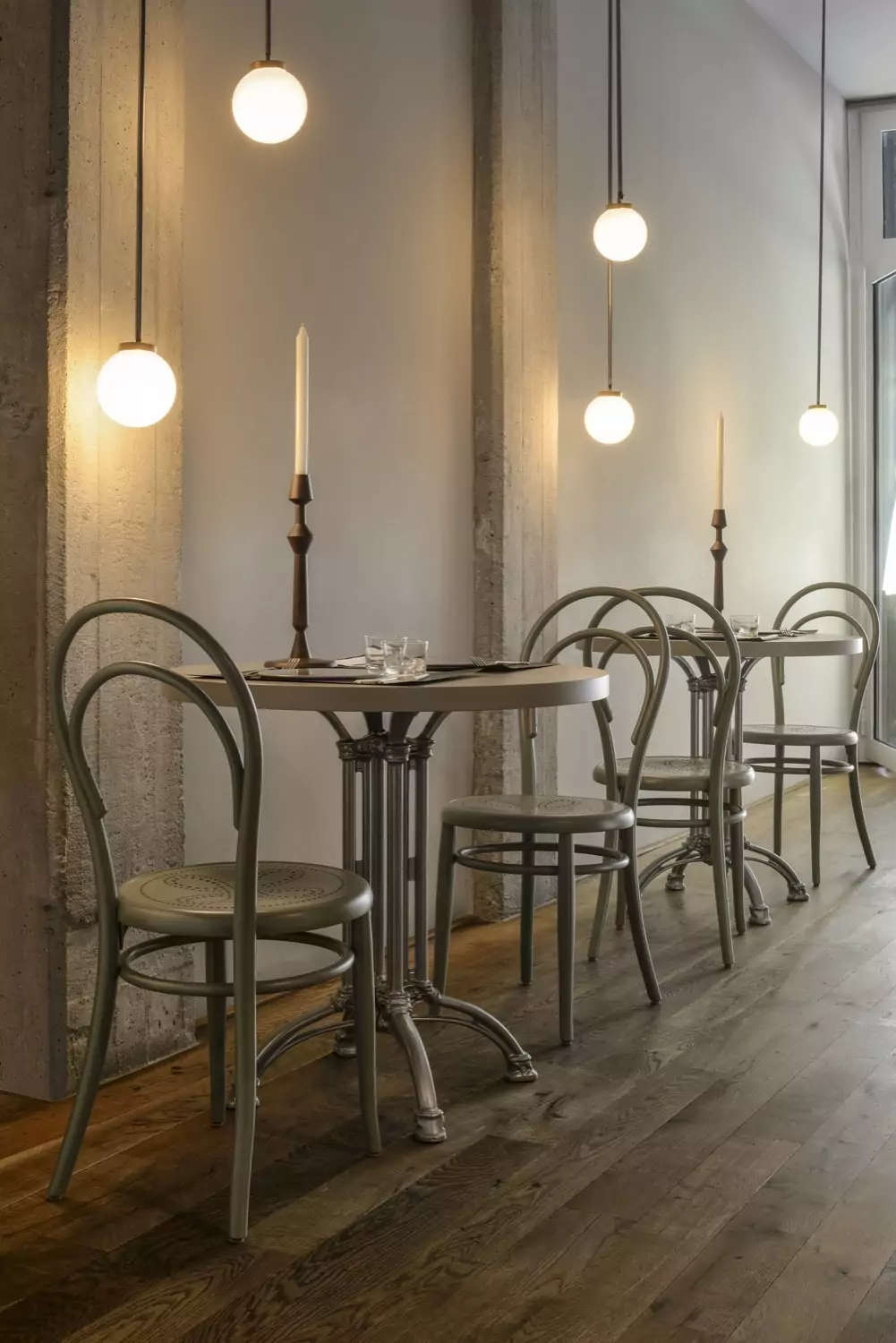Six wooden slats, ten screws, two nuts; these were the elements needed to create one of the most innovative and popular design objects still in use today: the Chair No. 14, produced by Gebrüder Thonet Vienna. This chair, now known to design enthusiasts and non-design enthusiasts alike, such has been its widespread popularity, is accompanied by a long and intricate history, beginning in the mid-nineteenth century, which is linked not only to the birth of the object itself, but to the vicissitudes of a family, the Thonet, who revolutionized the production of wooden furniture by exploiting the innovations of their time.
Michael Thonet (Boppard, 1796 - Vienna, 1871) set this story in motion, creating a company that would go through a variety of vicissitudes, including two world wars, and that after these would be called upon to rebuild and evolve, projecting itself ever more into the future. Trained as a cabinetmaker, an expert in geometric inlays, Thonet immediately displayed a creative and experimental spirit, open to the study and research of ever new forms and techniques of woodworking. In his formative years, woodworking and furniture making were purely artisanal processes: in each element, in fact, it is possible to recognize the “hand” of the craftsman, who makes it by employing time and skills that are his alone.
What leads Michael Thonet to distinguish himself from others and propels him toward his future success is the conception of a new method for bending wood: by making it absorb moisture through the use of steam, the wood can be worked easily, and then be dried inside special molds. This solution came after several experiments that involved dipping packets of wood in boiling glue and then drying them into rigid forms; it moved from the realization that fresh wood is more flexible than dry wood, and that by going to act only on the physical properties of the material, the use of adhesives that did not guarantee adequate strength of the product could be avoided. In 1842 Thonet was called to Vienna by Prince Metternich, a diplomat, statesman, and at that time Chancellor of State of the Habsburg Empire. It was precisely in Vienna that Thonet developed the patent for the process that would make him known throughout the world, and, assisted by his sons, he began making parquet floors and furniture elements for the palaces of wealthy Viennese families, such as the Schwarzenberg Palace or the Liechtenstein Palace, for which he made Chair No. 1, with its light, elegant and supple forms, that is, the “type” Thonet chair.


The popularity of the Thonet family increased after the first World’s Fair in 1851: in the setting of the Crystal Palace - an architecture symbolic of the spirit of the time, created through “new” and modern materials, such as iron and glass, and composed of mass-produced elements - Thonet exhibited prototypes of its furniture made with the technique of steam-curved solid beech, characterized by elegant forms and lightness of materials. In this context, as Gebrüder Thonet Vienna itself puts it, “the design philosophy centered on the simplification of compositional elements with a view to serial production that combines solidity, beauty and adaptability is already outlined.”
From this time on, the company expanded more and more, leaving the confines of Vienna, from where everything originated, and opened new production facilities in neighboring territories, such as Hungary and Moravia, (a region characterized by a large amount of forested area that allowed for the supply of material), even going so far as to open showrooms in America. It was during these years that Michael Thonet passed the baton to his sons, founding the company Gebrüder Thonet in 1853, which still produces the furniture born from the mind of Thonet and his heirs. In the manufacturing plants, industrial processes began to be set up to create furniture that could be mass-produced, cutting assembly time and production costs, and that could thus be designed to meet the demand of a large number of people. In this, Thonet was a key node in the transition between handcrafted and industrial and semi-industrial production, which from an initial prototype creates standardized elements. Through the technique of steam-curved wood it initiated “a true industrial process that was accompanied by the gradual elimination of ornaments and joints, in favor of a rigorous line and careful attention to the simplification of the joining elements.”
It was at this moment of transition that chair No. 14, also known as the coffee chair or Vienna chair, was designed, since it was inserted in the wake of those designed by Thonet for public and collective settings such as bars and bistros, first and foremost the Café Daum in Vienna, and not for private and aristocratic palaces like the first one, No. 1. Chair No. 14 is the result of about two decades of research and experimentation and embodies Thonet’s philosophy: it is an essential and economical object, since it is mass-produced, consisting of only a few elements-six-in which the backrest and legs are made from a single piece of wood. It is made using the technique of curved solid beechwood, and is easily assembled both during production and after disassembly for transport. This was essential because not all workers in the production plants were adequately skilled, and the essentiality of the object ensured that it could be assembled in a short time even by untrained personnel. Its seat is made of the famous “Vienna straw,” another hallmark of Gebrüder Thonet’s creations. This upholstery, created by weaving plant fibers, is inexpensive, lightweight and durable, but also functional and ergonomic. Functional because, as a chair intended for bars and bistros, it promotes the drainage of liquids in case they are spilled; ergonomic because, as a natural fiber, it maintains a pleasant temperature for the body and adapts to it.




All these elements explain the great success of Chair No. 14, which has all the hallmarks of “good design,” including that it is still produced by Gebrüder Thonet Vienna, more than 100 years after its creation in 1860. Its success, like that of the manufacturing company, between the end of the nineteenth century and the course of the twentieth century is linked to the names of great designers, such as those belonging first to the Viennese Secession, or then to the Modern Movement, who recognized in it an ideal model-the right combination of technique and style, as Le Corbusier argued-and decided to design original elements that could be produced precisely by Gebrüder Thonet. Further confirmation of No. 14’s transition to a design “icon” is its presence in the collections of museums such as the MoMa in New York, the Vitra Design Museum in Weil am Rhein, or the Victoria and Albert Museum in London, which also help to spread and publicize Michael Thonet’s legacy.
Warning: the translation into English of the original Italian article was created using automatic tools. We undertake to review all articles, but we do not guarantee the total absence of inaccuracies in the translation due to the program. You can find the original by clicking on the ITA button. If you find any mistake,please contact us.